Baby washing machine - DIY repair
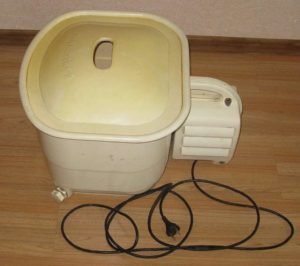 It is believed that the washing machine Baby is only interested in the elderly. In fact, many other sectors of the population use such a technique. She is especially interested in summer residents and single people. The charm of this machine is the lightness and simplicity of the device, it lacks a drum and cool electronics, but it sometimes breaks. Damage to the washing machine. Baby can not be called complex, and even more so fatal. In most cases, you can fix it yourself, especially if you take the advice of our specialists.
It is believed that the washing machine Baby is only interested in the elderly. In fact, many other sectors of the population use such a technique. She is especially interested in summer residents and single people. The charm of this machine is the lightness and simplicity of the device, it lacks a drum and cool electronics, but it sometimes breaks. Damage to the washing machine. Baby can not be called complex, and even more so fatal. In most cases, you can fix it yourself, especially if you take the advice of our specialists.
Frequent breakdowns
The washing machine Baby belongs to the activator type technique. This means that the drum is an integral attribute of any modern automatic washing machine, it is absent here, and its activator replaces it. However, if Baby were an automatic washer, it might have a drum in it, but since this is a semi-automatic machine, we will find nothing but a washing tub and activator in it.
Since Baby does not have a drum, she does not make such noise during operation as a washing machine.
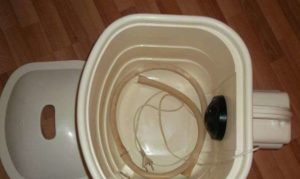 In view of the fact that this washing machine is simple and there are not so many breakdowns in it, we can easily list and consider all typical malfunctions that the user potentially encounters during the operation of such equipment. Here are the symptoms of typical malfunctions:
In view of the fact that this washing machine is simple and there are not so many breakdowns in it, we can easily list and consider all typical malfunctions that the user potentially encounters during the operation of such equipment. Here are the symptoms of typical malfunctions:
- instead of washing, the machine buzzes and then turns off;
- the activator twists slowly or gets stuck;
- the car is tearing and crushing laundry, a loud noise is heard;
- washing machine case Baby is leaking;
- the hose of the washing machine The baby is leaking;
- the machine does not turn on;
- the machine turns on, buzzes, but the activator does not twist;
- the washing begins, but stops within a few minutes, the heating of the body is noticeable;
- the machine does not turn on, while there is the smell of burning wiring.
Symptoms of breakdowns are understandable and obvious, but what kind of malfunctions gave rise to them. Here, too, everything is quite simple. A part of the symptoms is caused by a faulty activator, a part by the electrician of the washing machine, and partly by a faulty electric motor. Leaks of various nature can occur due to improper connection of the machine by the user, or due to wear of the sealing rings and various rubber bands, but we will not get ahead of ourselves.
Activator Issues
The activator is a movable element of the Baby washing machine, due to the rotation of which there is a washing of things in the washing tub. Violation of the mobility of the activator leads to a halt in the washing process. Moreover, in some cases, the thermal relay is activated and the machine turns off. Let's list the problems associated with the activator and at the same time, we will figure out how to fix these problems.
- The washing machine tank is significantly overloaded. When the washing machine is overloaded with laundry, the activator does not spin normally or does not spin at all. At the same time, the washing machine starts to buzz desperately, and then completely shuts down. Solution: unload the washer, wait at least 15 minutes, restart it.
- Threads, pieces of fabric, etc., were wound around the activator and its shaft. Symptoms are the same, the activator does not spin normally, the machine is buzzing, and then it turns off. Repair will consist in cleaning the shaft and activator from threads, rags and other foreign bodies that interfere with the operation of the moving part.
- The activator is skewed. The activator turns, but at the same time the laundry after washing is partially torn and badly wrinkled, or the activator touches the walls of the washing tub. The indicated actions are accompanied by a strong hum, and sometimes the Baby washing machine is turned off for no apparent reason. Solution: deploy the washing machine, remove the plug, unscrew the activator, clean the thread and screw the activator again until it stops.
Leaks
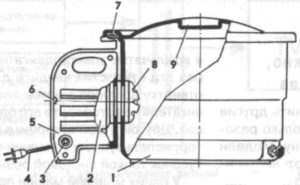 Leaks occur in washing machines such as Baby rather often, so some users, not considering it necessary to fix them, simply put their "home assistant" in the bath and start the wash. This approach can be dangerous due to the fact that water leakage from the tank or hose can damage the electrician of the washing machine, a short circuit will occur and the user himself may be injured. So we will not leave leaks unattended, but we will eliminate their causes with our own hands.
Leaks occur in washing machines such as Baby rather often, so some users, not considering it necessary to fix them, simply put their "home assistant" in the bath and start the wash. This approach can be dangerous due to the fact that water leakage from the tank or hose can damage the electrician of the washing machine, a short circuit will occur and the user himself may be injured. So we will not leave leaks unattended, but we will eliminate their causes with our own hands.
If you find a leak in the body of the Baby washing machine, you need to check it for two potential breakdowns: damage to the large o-ring and damage to the flange assembly. In order to understand where exactly it is flowing, it is necessary to partially disassemble the washing machine. We do the following:
- dismantle the activator, and then unscrew its body;
- we inspect a large gum, called a large o-ring;
- if there is any damage, we replace the part with a similar one;
- if the large elastic is intact, disconnect the casing and the electric drive from the tank;
- having unscrewed six screws, we disassemble the casing by pulling out the flange assembly;
- disassembling the flange assembly, photograph the location of the parts, remove the rubber sleeve and inspect it for damage;
- also inspect the small o-ring; if any of the parts is damaged, replace them.
Sometimes a small snap ring of a flange assembly becomes the cause of the leak. If the ring weakly compresses the cuff, it must be replaced by a stiffer one or simply bent, but in this case the leak may occur again.
The easiest way to detect and repair leaks in hoses or fittings. Unscrew the nut holding the fitting, take out the sleeve, pull out the gasket. If the slightest damage is detected, we replace the part. The hose itself can also get damaged, although over time, poor-quality hoses that come with Baby washing machines dry out, crack and fail, starting to let water through. The solution, in this case, is one - replacing the hose.
Electrical problems
If you turn on your washing machine, Baby, as usual, and it does not show any signs of work, most likely the electric circuit is broken somewhere. To look for and fix a breakdown in the electrics of the washing machine, you have to completely disassemble it.
- We dismantle the activator.
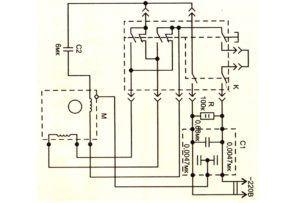
- We pull off his body.
- We remove the engine cover.
- Remove the flange assembly.
- Dismantle the washers from the engine shaft.
- We take out the protective elements from the casing - decorative plugs.
- We turn out the cogs.
- We disconnect the rubber seal, while disassembling the elements of the half-shell.
Now you can check the electrics of the washing machine. We arm ourselves with a multimeter, reconfigure it to ohmmeter mode and check the wiring and semiconductor parts in turn. Possibly oxidized terminals, screws or nuts may have caused poor contact. We clean all suspicious elements with sandpaper and check the contact again.
If wire breaks are detected, the breakage point must be reliably connected. It’s better not to twist the wires, but to use a small connecting block. Inspect all wiring during repair. If there are suspicious wires, terminals, semiconductor elements, they must either be replaced or insulated.
When assembling or disassembling the semiconductor elements of the washing machine Baby do-it-yourself do not forget to check its electrical circuit.
Quite often, a washing machine has a malfunctioning time relay, as well as a switch. We do not recommend repairing them; it is better to replace them. First, remove the old switch along with the time relay.
- there is a small cap next to the switch, it must be turned out;
- then unscrew the metal nut;
- remove the puck;
- push the switch into the case;
- disconnect from the wiring switch.
You can try to clean the contacts of the switch, and then wipe them with gasoline. In some cases it helps, but it is better to replace both the circuit breaker and the time relay. These parts are worth a penny, but then there will be no problems with their performance.
A thermal relay may also fail. In working condition, the contacts of the thermal relay open “hot” and close “cold”. Only a cold element is checked with an ohmmeter. A broken, faulty relay cannot be repaired, it is replaced with a new one with exactly the same technical characteristics.
Engine defective
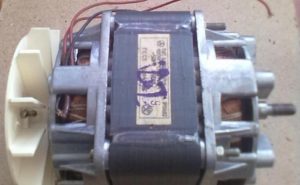 With the engine of the washing machine Baby can also be a problem. In this case, we mean: loss of contact of one of the many windings of the engine, breakdown and shorting of the winding, burnout of the winding. In this case, repairing the engine, primarily rewinding it, is not economically feasible. Even if you do it yourself, spend too much time.
With the engine of the washing machine Baby can also be a problem. In this case, we mean: loss of contact of one of the many windings of the engine, breakdown and shorting of the winding, burnout of the winding. In this case, repairing the engine, primarily rewinding it, is not economically feasible. Even if you do it yourself, spend too much time.
It is much easier to change the electric motor to a similar new one or, even better, buy a new Baby washing machine. By the way, a new motor costs almost as much as a new machine, but just in case, let's say that a single-phase asynchronous motor with two windings is used in the Baby washer.
Prevention
To the Baby washing machine served for a long time, and most importantly safe for others, follow a number of simple rules, which in a certain scenario will save the washing machine, and, very importantly, your life. These rules are simple and do not differ in anything remarkable, however, every second user neglects them.
- Do not try to heat water with a boiler directly in the washing machine tank.
- Do not place the washing machine on the ground, on the bottom of an iron bath, or on any metal surface.
- If you disassembled the washing machine, make sure that the gasket is correctly inserted and that the fasteners are evenly tightened.
By the way, if the sealant has any damage, it needs to be changed and it is not necessary to skimp in this case - this is your safety.
- If during washing you realize that there are suspicious odors, such as the smell of burnt electrical wiring, immediately turn off the washing machine.
- If after touching the body of the washing machine you feel a strong or light tingling, also turn off the machine, it needs repair.
The socket to which you connect the Baby washing machine should have protection in the form of grounding and the automatic machine. About how to do it right outlet for a washing machine in the bathroom You can read in the article of the same name posted on our website.
In conclusion, we note that the Baby washing machine is morally obsolete 20 years ago, however, it is still in demand. This machine is cheap, so calling a master to repair it is unprofitable, and the masters often do not undertake such repairs. There is only one solution - do it yourself. How? We have spoken about this in detail in this article. Have a good repair!
Interesting:
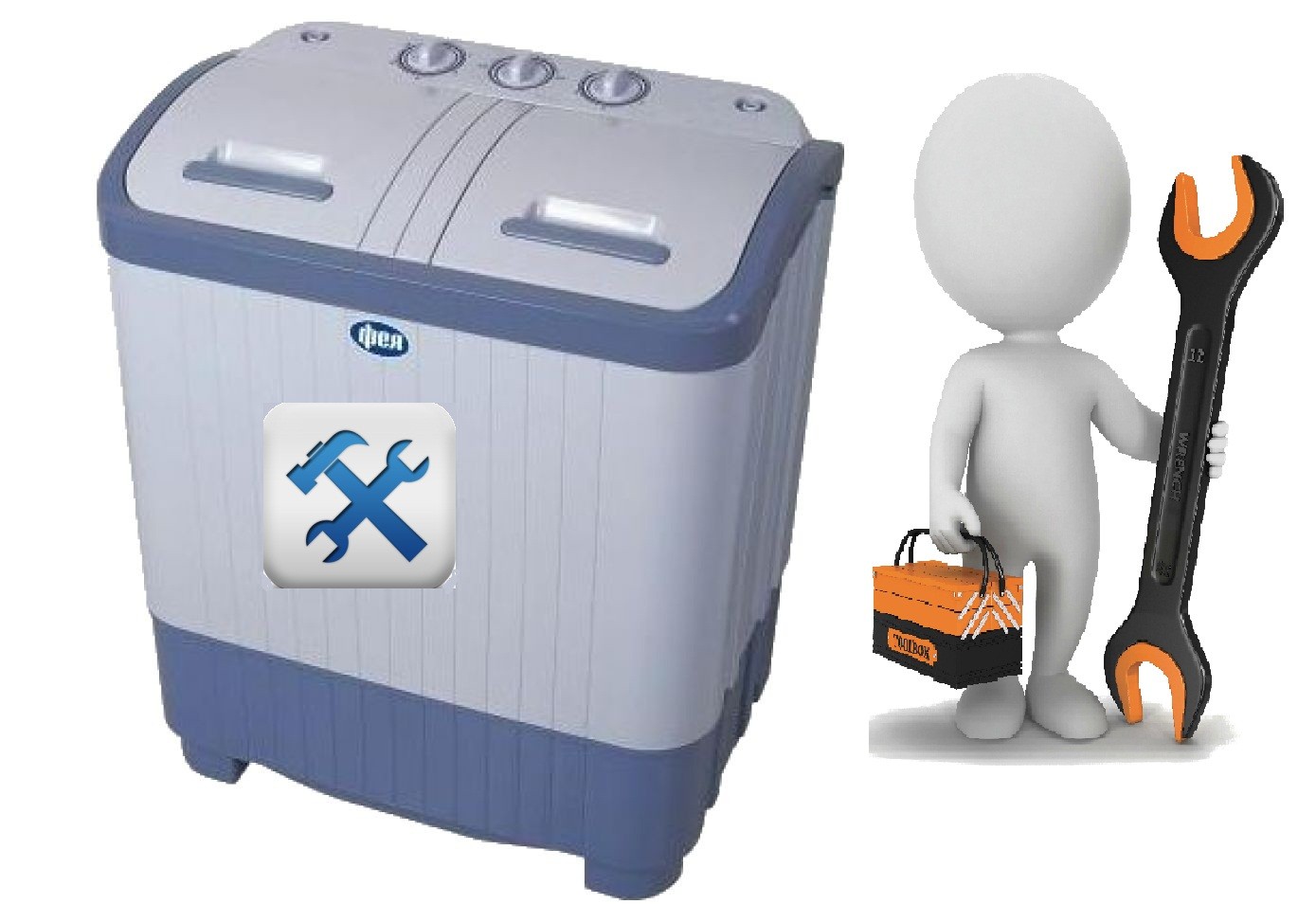 Malfunction Repair Fairy washing machines
Malfunction Repair Fairy washing machines How to replace the activator of the washing machine
How to replace the activator of the washing machine What is a semiautomatic washing machine?
What is a semiautomatic washing machine? Repair of malfunctions of washing machines semiautomatic device
Repair of malfunctions of washing machines semiautomatic device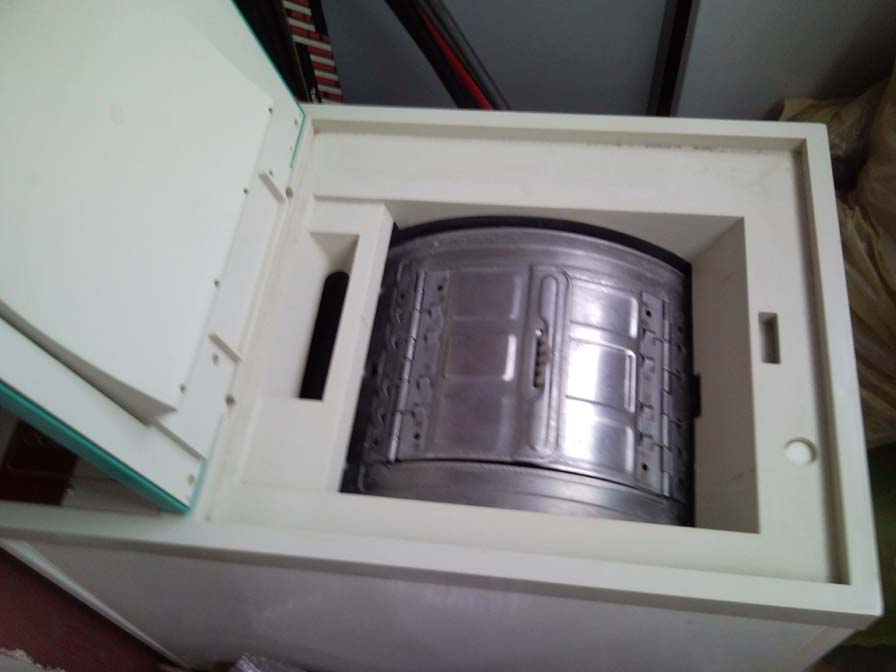 Semi-automatic washing machine malfunctions with a centrifuge
Semi-automatic washing machine malfunctions with a centrifuge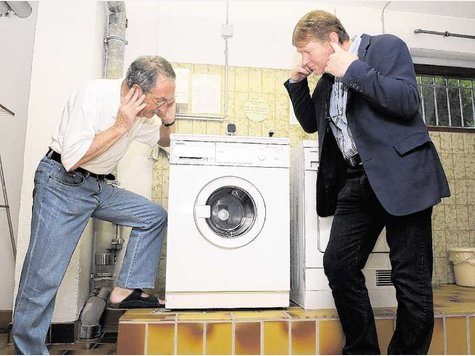 The washing machine is noisy during the spin cycle - what should I do?
The washing machine is noisy during the spin cycle - what should I do?
2 reader comments
Add a comment Cancel reply
Headings
Washing machine repair


For buyers
For users

Dishwasher












The article does not provide numbers for replacement parts. In general, everything is fine! Thank.
I did not find advice ... after a few minutes of washing, the machine starts to whistle. Tell me what needs to be replaced?